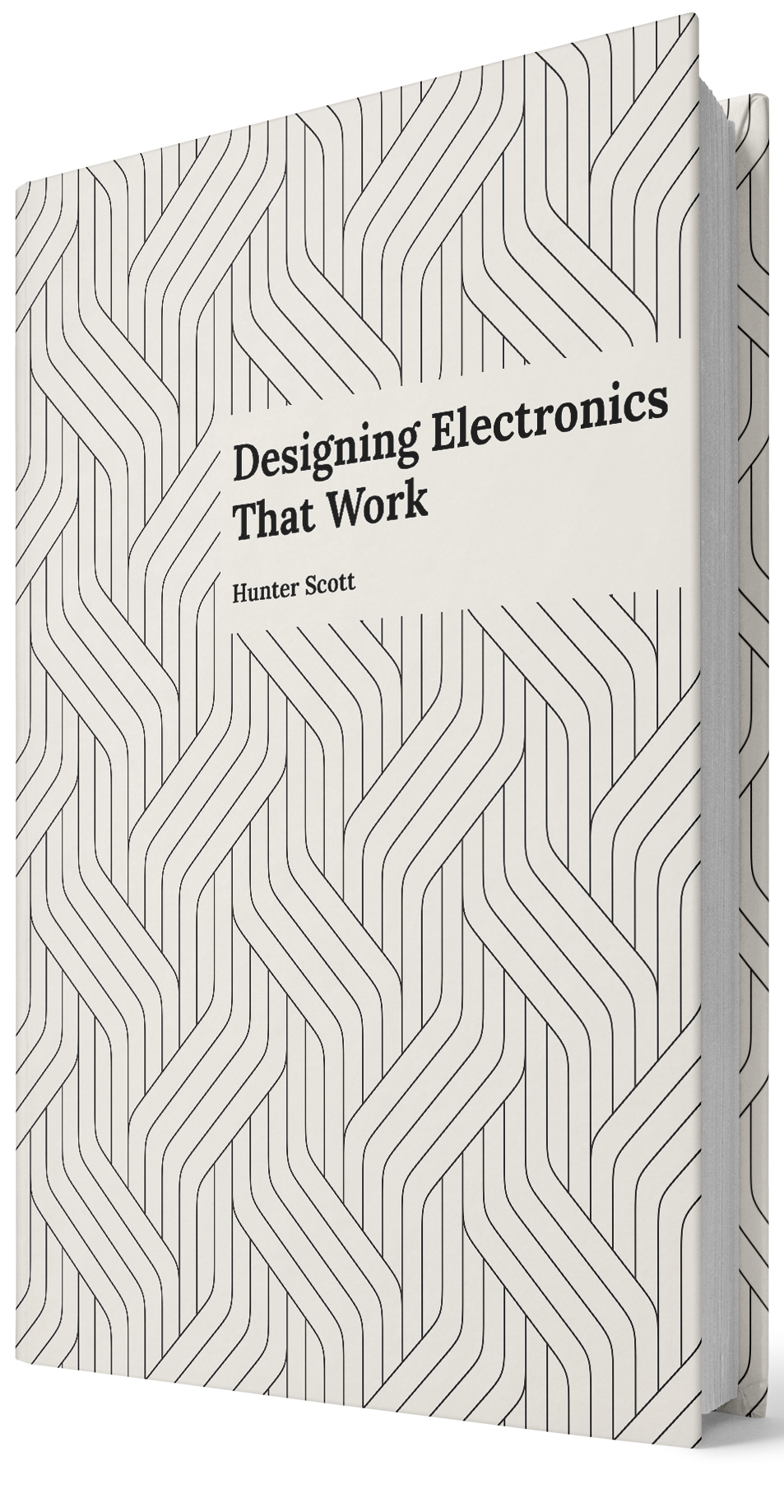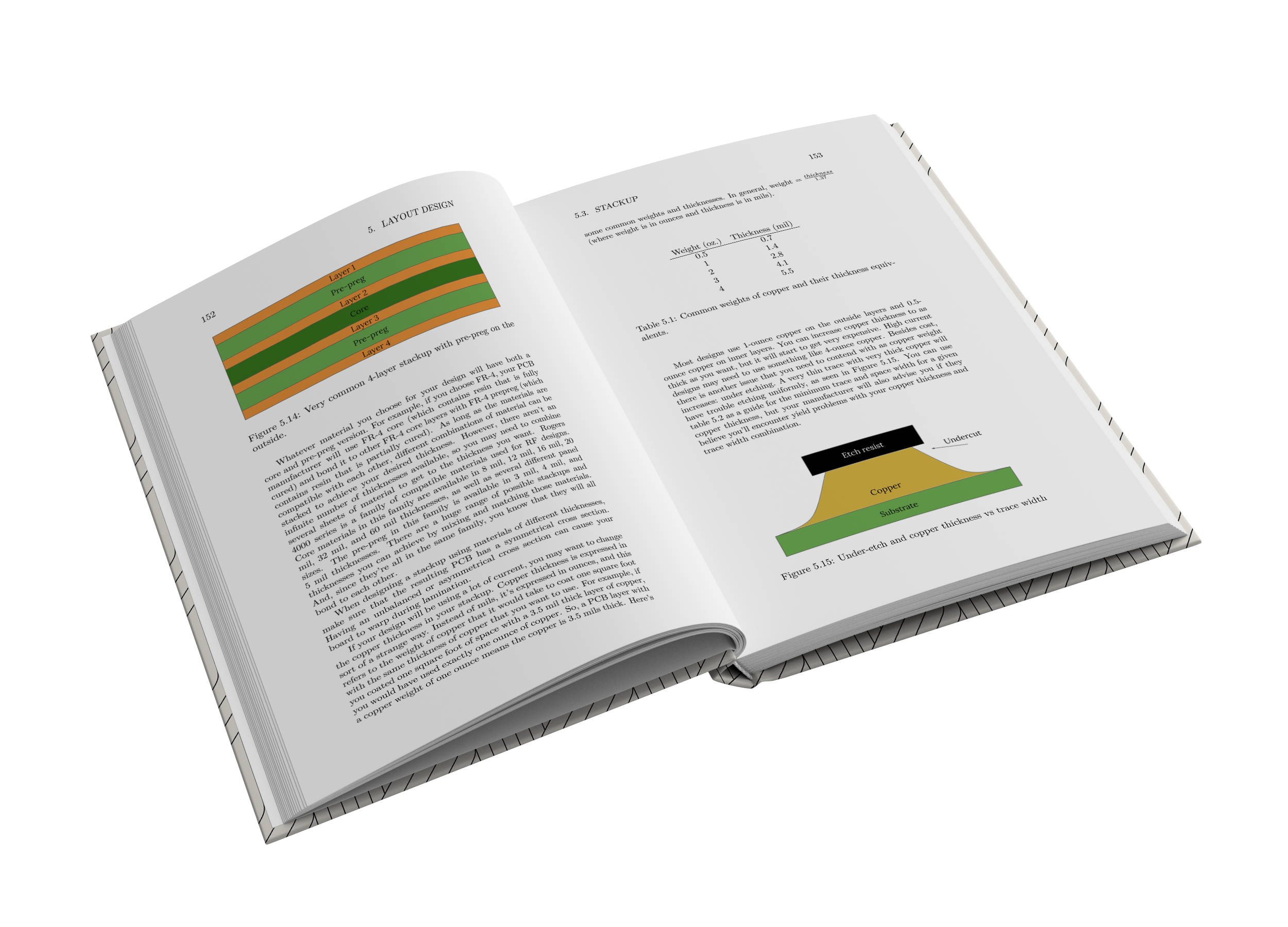FAQ
How is this different from The Art of Electronics?
The Art of Electronics is a wonderful book, but doesn't contain a lot of information about the design process. It's mostly theory, which is important, but is missing a lot of the information that I ended up learning the hard way. The Art of Electronics makes a wonderful companion to Designing Electronics that Work.
How much electronics knowledge do I need going into this book?
This books assumes that you know the very basics, like what capacitors and inductors are. If you want to learn about schematic capture, layout, prototyping, testing, and the other steps of electronics design, this is a great book for you. If you want to know how to calculate a frequency response or analyze an op-amp circuit, you should look for a different book.
What's in this book?
Designing Electronics that Work is a guide to designing and manufacturing electronics that covers the things most people only learn by experience. This book contains hundreds of tricks and techniques that save you time and money by helping you speed up development and avoid mistakes. It's concise, unique, but most of all, useful. It teaches you how to build elegant hardware that works.
Most electronics books answer questions like "what is a capacitor and how does it work?" This book instead addresses questions like, "How do I know which capacitor to buy out of the hundreds of thousands available that all look the same? How do I use a capacitor in my schematic and layout so that it performs in the way I expect?". These kinds of questions are not well covered in electronics books or even in school, but if you don't know the answers, your design won't work and you'll spend days or weeks troubleshooting.
Who is this book for?
This book is written for new electrical engineering graduates, hobbyists, startups, hardware hackers, artists, researchers, grad students, people who want to move past Arduinos and make custom PCBs, and anyone who wants to get their designs back from fabrication and have them work on the first revision. It contains timesaving techniques and helps you catch bugs before they're fabricated. It cuts through the fluff and gets straight to what you need to know to apply it. If you're designing your first PCB, reading this book may help you avoid mistakes you didn't know you were making. If you're designing your 1000th PCB, this book will act more as a checklist to help illuminate any area you forgot to think about.
Why is this book free?
I debated whether to charge for the digital version or not, and ultimately decided not to. I want this book to be a resource for everyone and to reach as many people as possible. I wrote this book in my free time over the course of several years, so if you found it useful and want to support me, you can choose to name your own price for the digital version when you download it, or you can purchase a physical copy.

